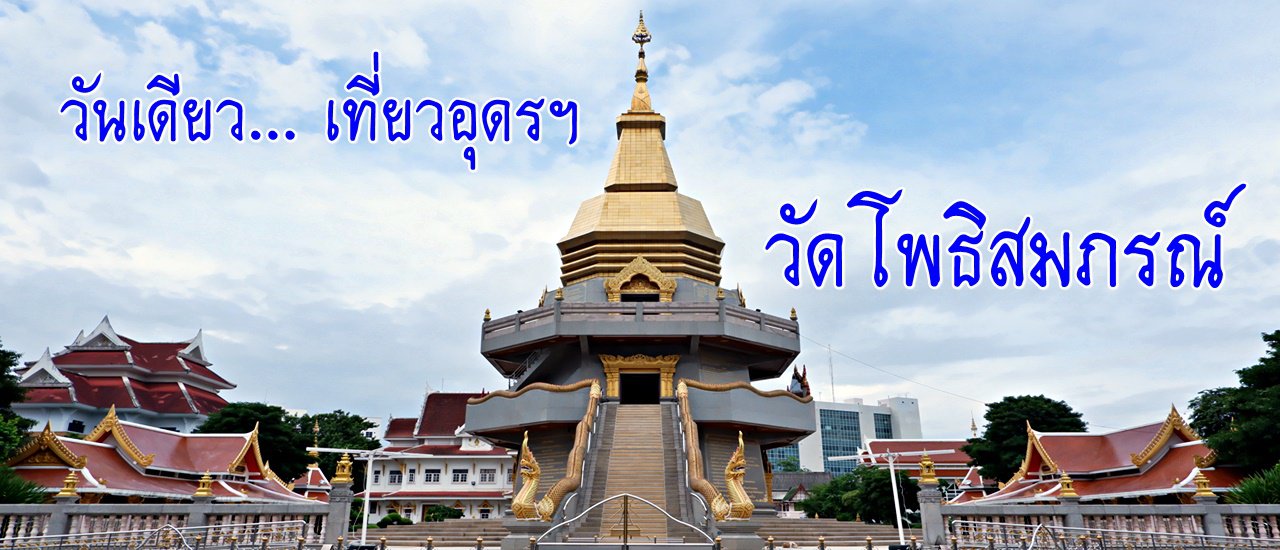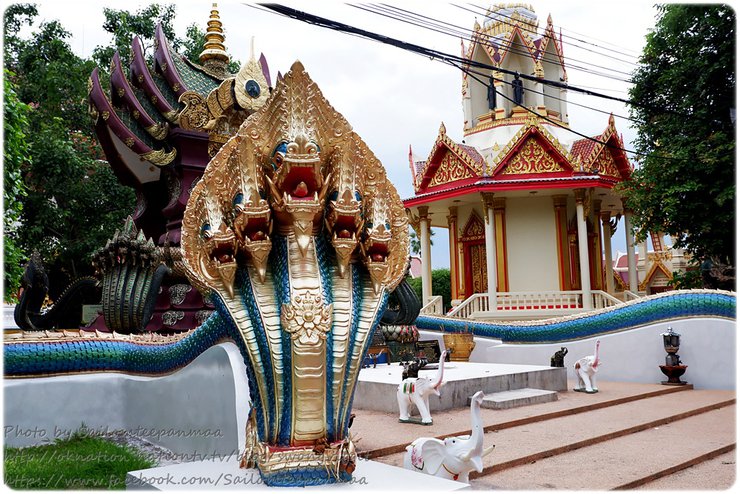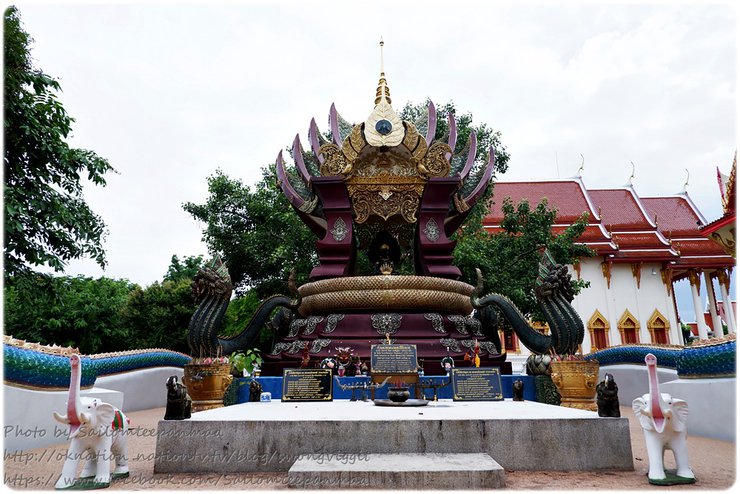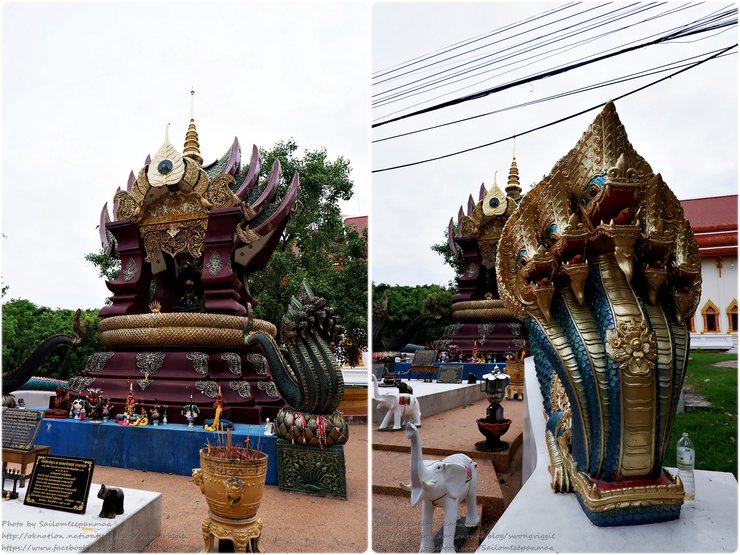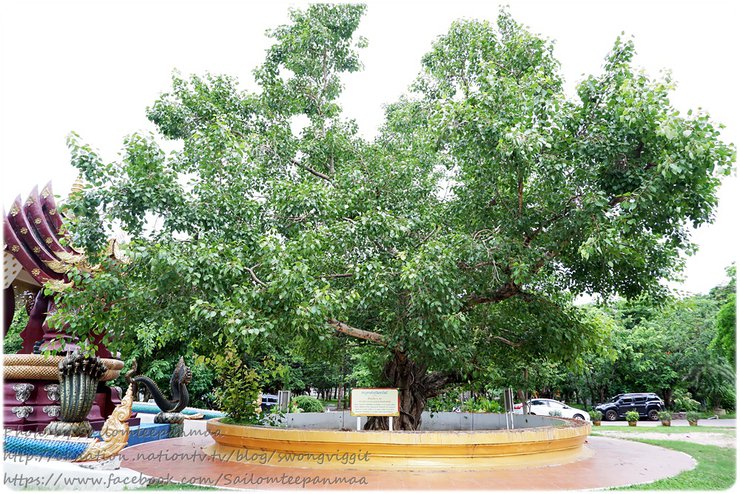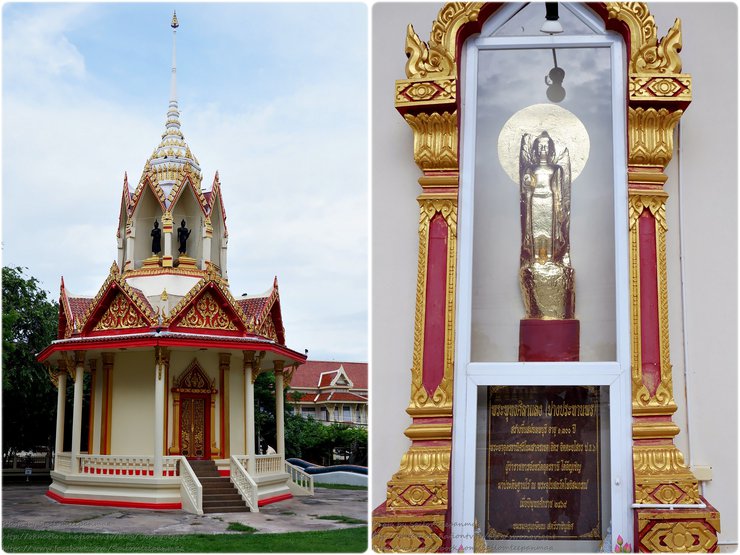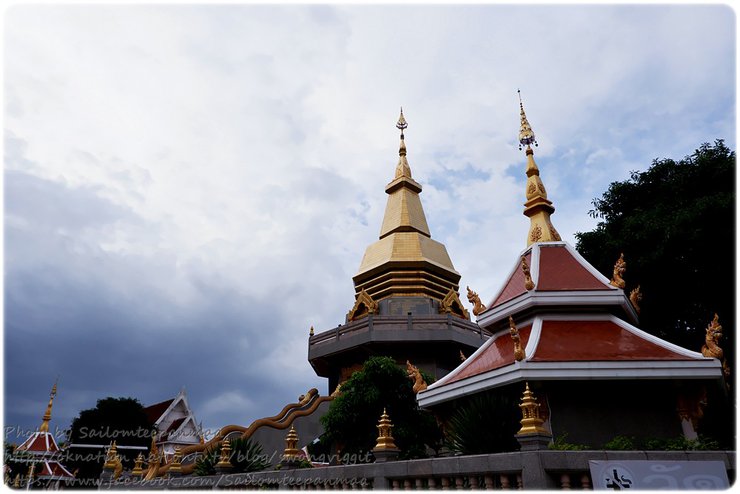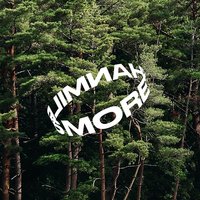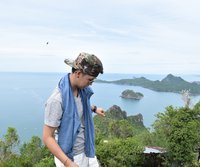
Leaving the museum, we continued to the temple. This temple, named Wat Phothisamphorn, is located near Nong Prajak and is situated on the west side of the lake. It covers a total area of 40 rai. On May 7, 1964, His Majesty King Bhumibol Adulyadej (Rama IX) graciously granted permission for Wat Phothisamphorn to be designated as a third-class royal temple.


The construction of Wat Phothisomphon began during the Rattanakosin period, in the year 2449 B.E. (1906 C.E.), towards the end of the reign of King Chulalongkorn (Rama V). The temple was commissioned by Phraya Si Suriyarachvoranuvart (Photi Netipoti), the Lord Lieutenant of Udon Thani.

The Bodhi Tree

Phraya Srisuriyarajavaranuvart (Photi Netipoti), the Governor of Udon Thani Province, considered that there was only one temple, "Wat Machchimawas", within the Udon Thani municipality. He deemed it necessary to build another temple. He surveyed a location south of "Nong Na Kluea", a large salt marsh rich in natural salt, fish, and crocodiles. (This marsh was later renamed "Nong Prajak" in honor of Prince Prajak Silpakorn, the founder of Udon Thani city.)


The Holy Relics Pagoda
The Holy Relics Pagoda, also known as Phra Borommathat Dhammakaya Chedi, is a significant Buddhist monument located in Pathum Thani, Thailand.
Note: This translation is concise and avoids personal pronouns, colloquialisms, and unnecessary details. It also maintains a formal tone and uses the active voice.
The location was deemed suitable for the construction of a temple due to its flat terrain, quiet forest, and proximity to a water source. It was not too far from the village. After the location was chosen, Maha Ammat Tri Phraya Si Suriyarajavaranuvatt (Photi Netipoti) led the villagers of Mak Khaeng to clear the forest to make room for the construction of kuti, sala, and a preaching hall. These structures would serve as a place for religious practice and for the annual royal ceremony of holding the water of the oath of allegiance by government agencies.


The construction of the temple took approximately one year. Initially, it was called "Wat Mai" (New Temple) by the locals, as there was previously only Wat Machchimawas, which they referred to as "Wat Kao" (Old Temple). Evidence suggests that Wat Kao was once an abandoned temple, with an ancient sandstone chedi and a white stone Buddha statue in the posture of subduing the naga. The villagers invited Phra Kru Tham Vinyanuyut (Nu), the abbot of Wat Machchimawas and the head monk of Udon Thani, to become the abbot of the new temple.


Emerald Buddha Replica (Phra Kaew Morakot)
29 inches wide, carved from Mekong River jade. Inside the Buddha's hair, the relics of the Lord Buddha are enshrined.

Relics of Luang Pu Saen Kanthasilo

Mural Paintings Depicting the Ascetic Practices of the Venerable Luang Pu Mun Bhuridatta Lineage
This text describes a series of mural paintings that illustrate the ascetic practices of the lineage of the Venerable Luang Pu Mun Bhuridatta. Luang Pu Mun was a highly influential Thai Buddhist monk who emphasized the importance of meditation and asceticism. The murals likely depict scenes from the lives of Luang Pu Mun and his disciples, showcasing their commitment to a simple and austere lifestyle dedicated to spiritual development.






(Right) The octagonal-shaped Phra Dhatu Chedi, measuring 4 meters wide and 5.40 meters high, enshrines the relics of the Buddha and the Arahant disciples.

The upper wall depicts the murals of the "Four Noble Truths"
and the four important Buddha statues.






An octagonal-shaped Phra Dhatu Chedi, 4 meters wide and 5.40 meters high, enshrines the relics of the Buddha and the Arahant disciples.


Urn containing the relics of the Buddha, bestowed by His Majesty King Bhumibol Adulyadej
upon Phra Udomyanamoli
Urn containing the relics of the Buddha, presided over by His Holiness Somdet Phra Yanasangvara
Somdet Phra Sangkharat, bestowed upon Phra Udomyanamoli


สายลม ที่ผ่านมา
Wednesday, February 26, 2025 7:24 PM

